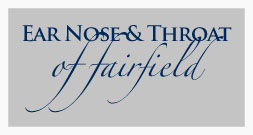 It takes some time for your nose to heal and recover following rhinoplasty. While you most likely want your nose to look better sooner rather than later, the truth is that you will usually have to deal with swelling and bruising after surgery. There are a few things you can do to make the post-rhinoplasty swelling a bit more bearable.
It takes some time for your nose to heal and recover following rhinoplasty. While you most likely want your nose to look better sooner rather than later, the truth is that you will usually have to deal with swelling and bruising after surgery. There are a few things you can do to make the post-rhinoplasty swelling a bit more bearable.
Keep Your Head Elevated
Keeping your head elevated is an easy way to reduce the pressure placed on this area as it heals. You will notice the blood flow moving away from your treatment area and the swelling gradually subsiding.
Keep your head elevated at a 45 degree angle. That means placing a few additional pillows on your bed, so that your head is propped up while resting or sleeping.
Apply Cool Compresses
Applying ice or cold compresses to the area around the nose can help bring down swelling, as long as you use the compresses during the first few days after surgery. After that, cold compresses can help you feel more comfortable, but will not do much for swelling.
Avoid Too Much Heat
Sun exposure and warmer environments will tend to cause increased facial swelling compared with if you stay out of direct sunlight and stay in relatively cooler places. Avoiding direct sunlight is also good for proper incision healing as well. Sun exposure after surgery can also cause hyperpigmentation or make your incision area darker.
Low Sodium Diet
Limiting sodium intake to 1500 mg a day or less effectively acts as a diuretic. Eating a low sodium diet is usually recommended after rhinoplasty surgery, as too much salt can cause your body to retain fluid and make swelling much worse. For best results, it is typically a good idea to start limiting your sodium intake at least a day before your rhinoplasty.
Contact Us
If you have any more questions about swelling after rhinoplasty or want to know more about what you can expect, contact Ear, Nose & Throat of Fairfield today at 203-259-4700.

